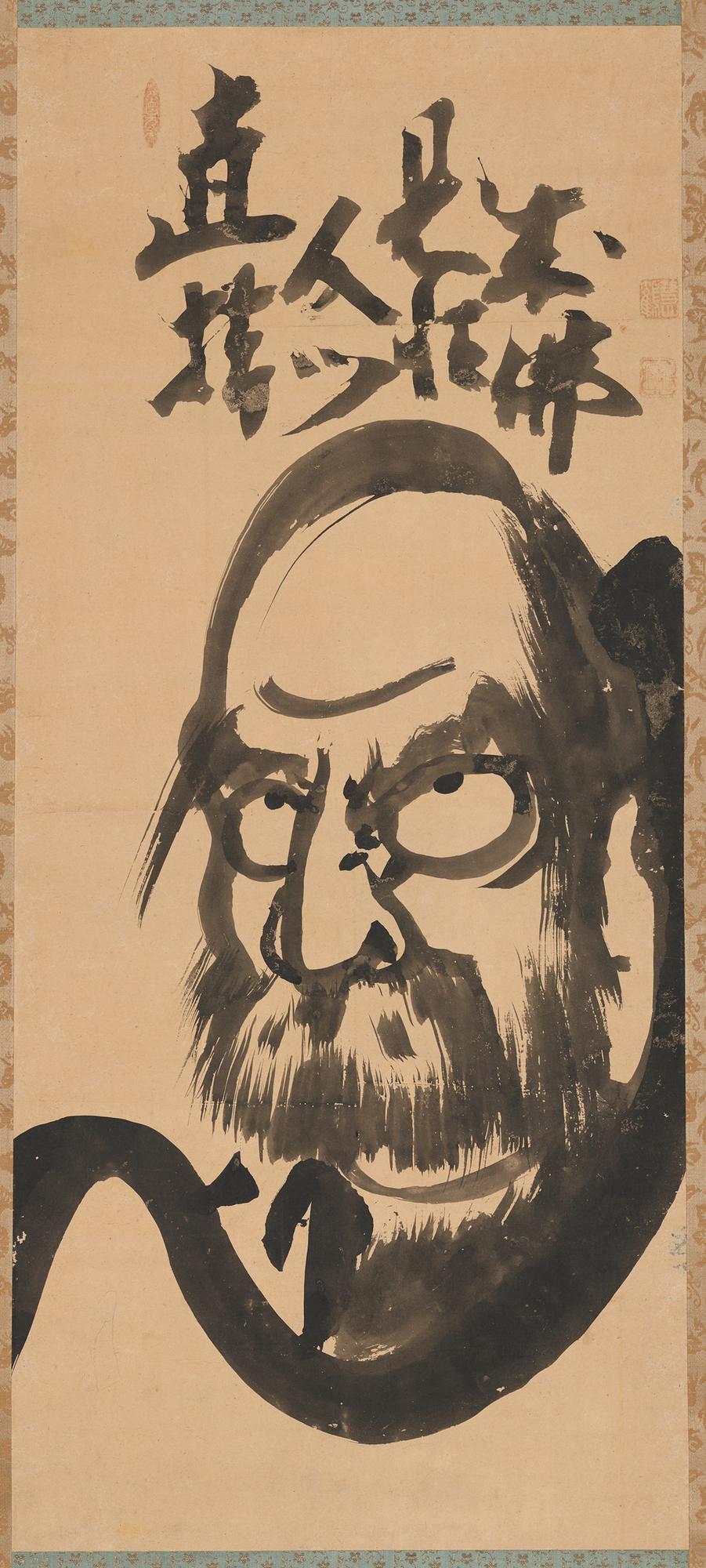GALLERY 2740 | EAST ASIAN BUDDHIST ART
 When Zen Buddhism was introduced to Japan in the early 13th century from China, it radically transformed Japanese religious practice and visual culture. Rather than focusing on the study of written scripture, Zen Buddhism stressed the "mind to mind" transmission of the Buddha's wisdom through direct master-disciple encounters. Zen emphasizes "emptiness," rejects binary distinctions between enlightenment and non-enlightenment and between self and other, and advocates meditation and the rigorous study of koans (paradoxical statements) to allow the mind to break free of conventional modes of thinking. Though it is a system of thought that insists on the emptiness of all form, painting and calligraphy became a critical part of practice for Zen monks and scholars. Painting with ink in the traditional East Asian mode is unforgiving: a mark made in the moment cannot be erased or reworked. Zen practitioners favored ink for its capacity to capture in perpetuity a moment of spontaneous spiritual intuition.
When Zen Buddhism was introduced to Japan in the early 13th century from China, it radically transformed Japanese religious practice and visual culture. Rather than focusing on the study of written scripture, Zen Buddhism stressed the "mind to mind" transmission of the Buddha's wisdom through direct master-disciple encounters. Zen emphasizes "emptiness," rejects binary distinctions between enlightenment and non-enlightenment and between self and other, and advocates meditation and the rigorous study of koans (paradoxical statements) to allow the mind to break free of conventional modes of thinking. Though it is a system of thought that insists on the emptiness of all form, painting and calligraphy became a critical part of practice for Zen monks and scholars. Painting with ink in the traditional East Asian mode is unforgiving: a mark made in the moment cannot be erased or reworked. Zen practitioners favored ink for its capacity to capture in perpetuity a moment of spontaneous spiritual intuition.

